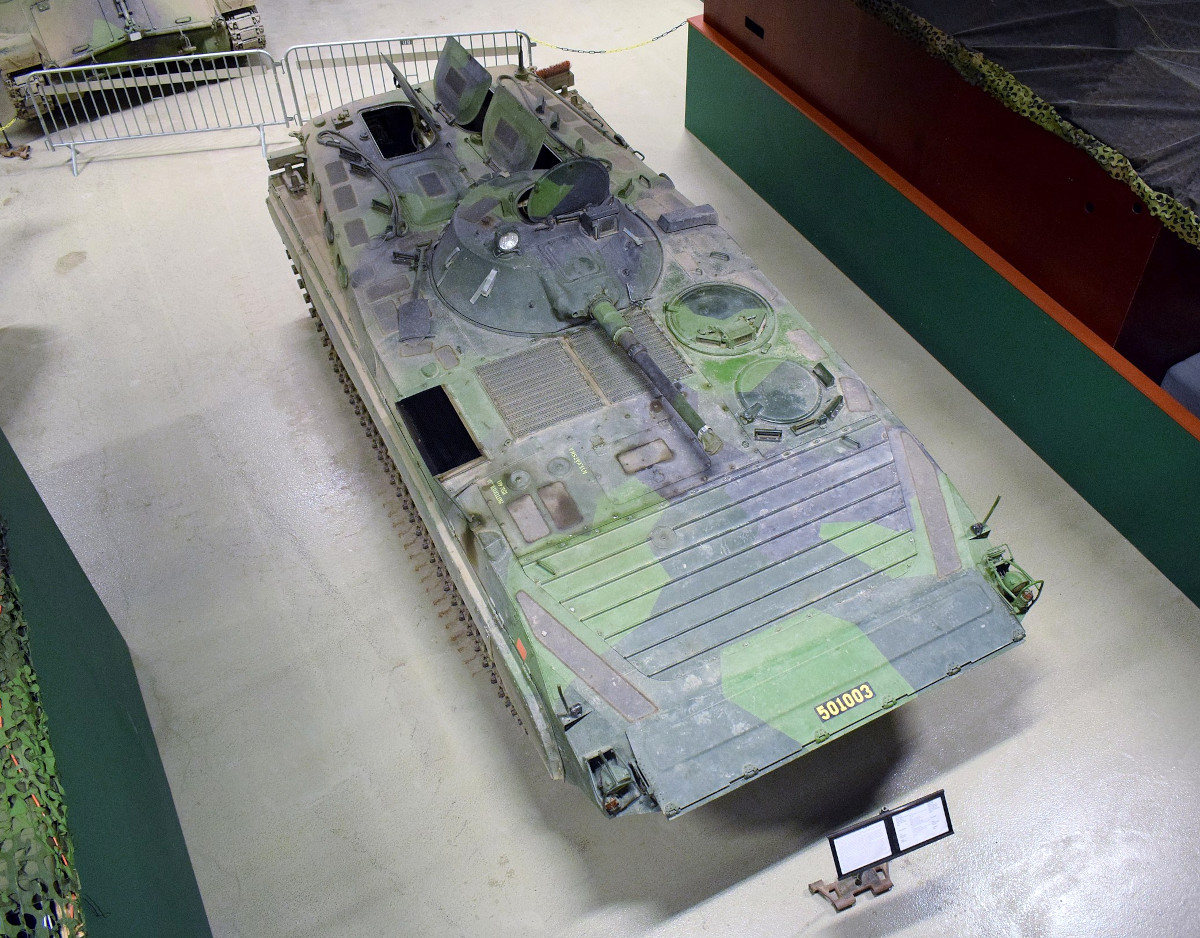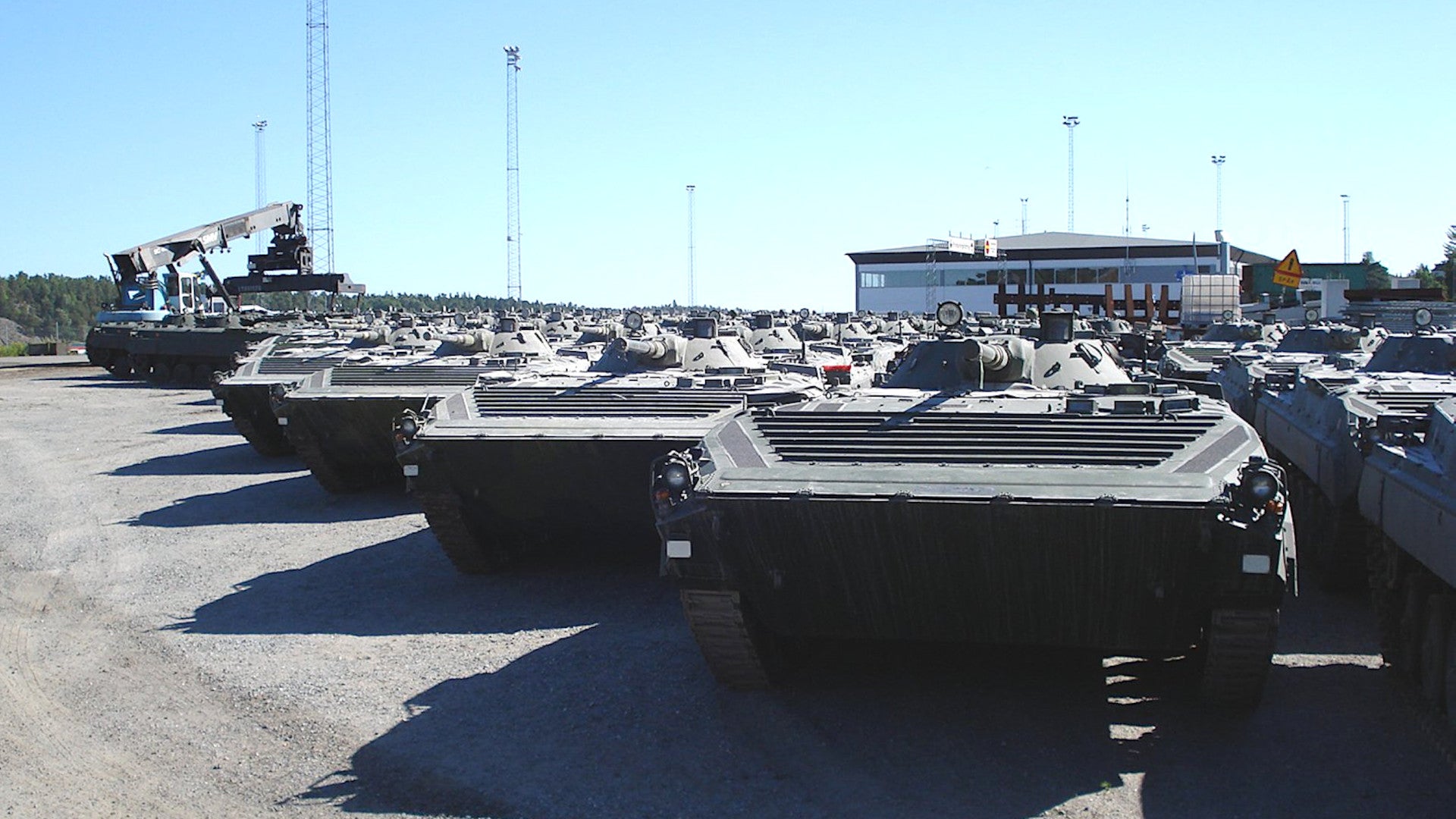Week six of the conflict in Ukraine has now begun. The Russian government has accused the Ukrainian military of carrying out a cross-border raid targeting a fuel depot in the city of Belgorod using Mi-24 Hind attack helicopters. At least one Ukrainian official now appears to have denied this claim, after others had declined to comment one way or another. If Ukrainian forces did carry out this operation, it would be the first time that manned hostile aircraft have struck Russian territory since at least the Korean War. You can read more about what we know about this still very murky incident here.
This comes as Russia’s force posture in the northeastern end of Ukraine continues to shift amid an apparent effort to reinvigorate offensives in the southeast. In the meantime, Ukrainian units continue to counterattack in multiple areas, notably retaking a growing number of towns in the vicinity of the capital Kyiv. Real progress on any kind of negotiated resolution to the war remains elusive.
The Ukrainian government continues to make appeals to various countries for additional military aid to help keep Russian forces at bay, and maybe even push them back further. Just today, German authorities announced that they had cleared a planned transfer of 56 Pbv-501 infantry fighting vehicles, which are upgraded ex-East German BMP-1s, from the Czech Republic to Ukraine. Ukrainian President Volodymyr Zelensky, among other officials in his country, has been publicly asking for more tanks and other heavy armored vehicles, as well as anti-ship and anti-aircraft missiles, and other weapons and equipment, to keep up the resistance against Russia’s invasion.
The War Zone readers can first get themselves up to speed on how the conflict has been progressing already here.
AUTHOR’s NOTE April 2nd, 2022: Check out the latest info at our most recent update post here.
The Latest
POSTED: 4:50 PM EST—
The German government’s approval of the transfer of the 56 Pbv-501s to Ukraine reportedly came after an earlier request from Czech authorities was denied. The need for authorities in Germany to authorize the deal at all is a product of the original sale of these Soviet-era vehicles, which it had inherited from the defunct East German military, to Sweden. The Swedish government had then sold them to the Czech Republic. There are reports that these will need to be refurbished to some degree before they can return to service.
Even before the sale to Sweden, the German military had already made modifications to these Soviet-supplied BMP-1s to bring them up to Western safety standards, redesignating them BMP-1A1 Osts in the process. The first versions of the BMP-1 entered Soviet service in 1966. The German modifications most notably included modifications to prevent the fuel tanks built into the doors at the rear of the troop compartment from being filled.

The Swedish military, which applied their own designateon to these vehicles, Pbv-501, put them through another upgrade program after purchasing them. This included modifications to the engine and drive train, and the removal of asbestos from inside the vehicle, as well as other improvements.
The Pbv-501s retain the BMP-1’s original turret, which contains a 73mm 2A28 gun and a coaxial 7.62x54mmR PKT machine gun. However, a guided anti-tank missile launch system that had been originally being integrated into the turret, was removed from these vehicles as part of the various upgrade programs.

The Ukrainian military, as well as that of Russia, continues to operate BMP-1-series vehicles. As such, it should be relatively easy to integrate these additional examples into their forces. If there are any issues in getting any of them back into an operational condition, they could still severe as useful sources of spare parts, too. These vehicles could be a boon to Ukrainian forces, which have already lost some of their existing stocks of BMP-1s in combat with Russian invaders.
As already noted, Ukrainian President Zelensky and other Ukrainian officials have been publicly asking for additional tanks and other amored vehicles to help replenish those lost in combat so far. There have also been appeals for other weapons, including more ground-based air defenses, which remain critical to the Ukrainian military’s ability to contest the skies over the country.
The video below emerged just today and reportedly shows a dramatic shootdown of a Russian Mi-28N Havoc attack helicopter using a surface-to-air missile, possibly a shoulder-fired type, also known as a man-portable air-defense system (MANPADS). The helicopter’s tail boom appears to almost, if not entirely separate from the main fuselage after it is hit.
The U.K. Ministry of Defense has assessed that Russian forces are continuing to carry out air and missile strikes across northeastern Ukraine, despite official pledges to de-escalate operations there earlier this week. Ukrainian units have been counterattacking with some degree of success in these areas, too.
The video in the Tweet below reportedly shows a salvo launch of Russian Iskander-M short-range ballistic missiles at targets in Ukraine’s northeastern Kharkiv region.
As Ukrainian forces have regained control of various towns around Kyiv, new imagery has emerged showing the devastation in these areas. New video clips showing the extensive damage to Hostomel (Gostomel) Airport outside of the Ukrainian capital, as well as wrecked vehicles and other remnants of war now there, continue to emerge. This airfield had been the site of major fighting for weeks, as Russian forces tried and failed to secure it for use as an airborne bridgehead. It had been home to the only flying example of the An-225 Mriya cargo plane, one of the largest aircraft ever built, which has now been destroyed.

At least some Russian forces still remain in the greater Kyiv area, according to the U.S. government. A senior U.S. official specifically highlighted the apparent use of a church and adjacent residential areas northwest of Kyiv as a potential staging point for continued operations.
Russian forces have been observed stepping up their operations in the southeast of Ukraine. This includes a surge in air strikes. The undated video below reportedly shows a Russian Su-25 Frogfoot ground attack aircraft operating at very low level over the eastern Donetsk region.
The Russian Ministry of Defense released the video below, which it says shows a Bastion-P ground-based anti-ship missile system belonging to the country’s Black Sea Fleet being used in a secondary land-attack role. Russian officials say that the missile successfully hit a Ukrainian command post at an unspecified location, but have provided no further corroborating evidence.
The Red Cross says it tried to help additional civilians evacuate from the southern Ukrainian port city of Mariupol on the Sea of Azov, but was unsuccessful. Russian forces have subjected Mariupol to a devastating siege for weeks now, but still have yet to fully secure it. Local Ukrainian authorities say that 90 percent of the city’s hospitals and schools have suffered at least some damage and 40 percent of the city, as a whole, has been destroyed.
The videos in the Tweets below reportedly show Ukrainian forces employing small commercially available unmanned aerial systems being used to help direct and adjust artillery fire against Russian units. Volunteer territorial defense units, including one associated with the far-right ultranationalist Right Sector group, are among those employing these tactics.
Video footage has emerged online showing Ukrainian forces moving land mines off a portion of a highway that stretches from Kyiv to the Polish border with their feet. This appears to be the same array of mines seen in a clip that had emerged earlier showing civilian drivers simply maneuvering around them. Though this definitely seems to be a less than optimal “demining” method, these mines appear to be TM-62 or similar anti-tank mines that require hundreds of pounds of pressure to trigger, making them at least somewhat safer to handle.
Ukrainian forces damaged what appears to be a PPRU-1 Ovod-M-SV, a radar-equipped air defense command post vehicle, in an ambush near the city of Chernihiv. This is a relatively rare find that could have significant potential intelligence value just like examples of the 9S932-1 MRU-B, another radar-equipped air defense command post vehicle, part of the Barnaul-T system, that elements of Ukraine’s armed forces have captured or otherwise stumbled across in recent weeks, as you can read more about here.
Ukrainian forces have also reportedly captured another Russian TOS-1A multiple rocket launcher system. This is a particularly devastating weapon that fires 220mm thermobaric artillery rockets, as you can read more about here.
Russian forces are now reportedly employing Uran-6 unmanned mine-clearing vehicles in Ukraine.
Ukrainian President Zelensky has said he has fired two senior members of the country’s Security Service, also known by the acronym SBU, over apparent treason. He added that there are other similar individuals left to “be punished.”
In Russia, online flight tracking software picked up an interesting flight involving a helicopter belonging to the Rossiya Special Flight Detachment. The helicopter departed from an area north of Moscow and then made a short trip to a facility belonging to the country’s Federal Protective Service, or FSO.
We will continue to update this post with new information until we state otherwise.
Contact the author: joe@thedrive.com
